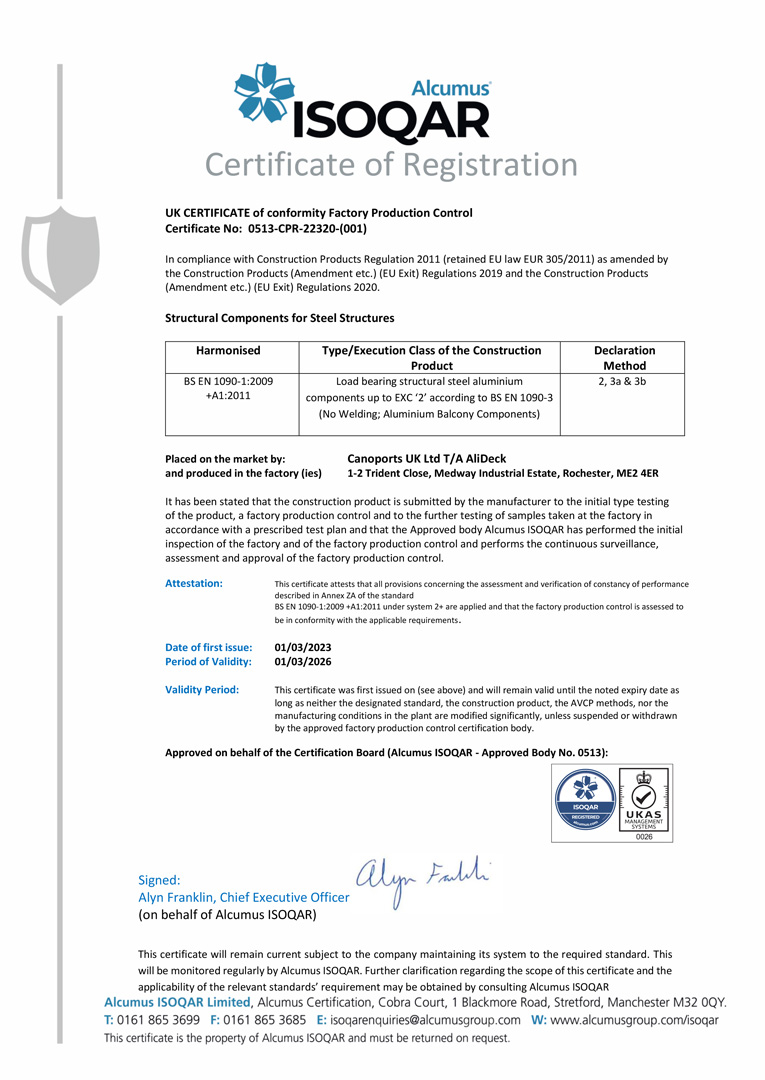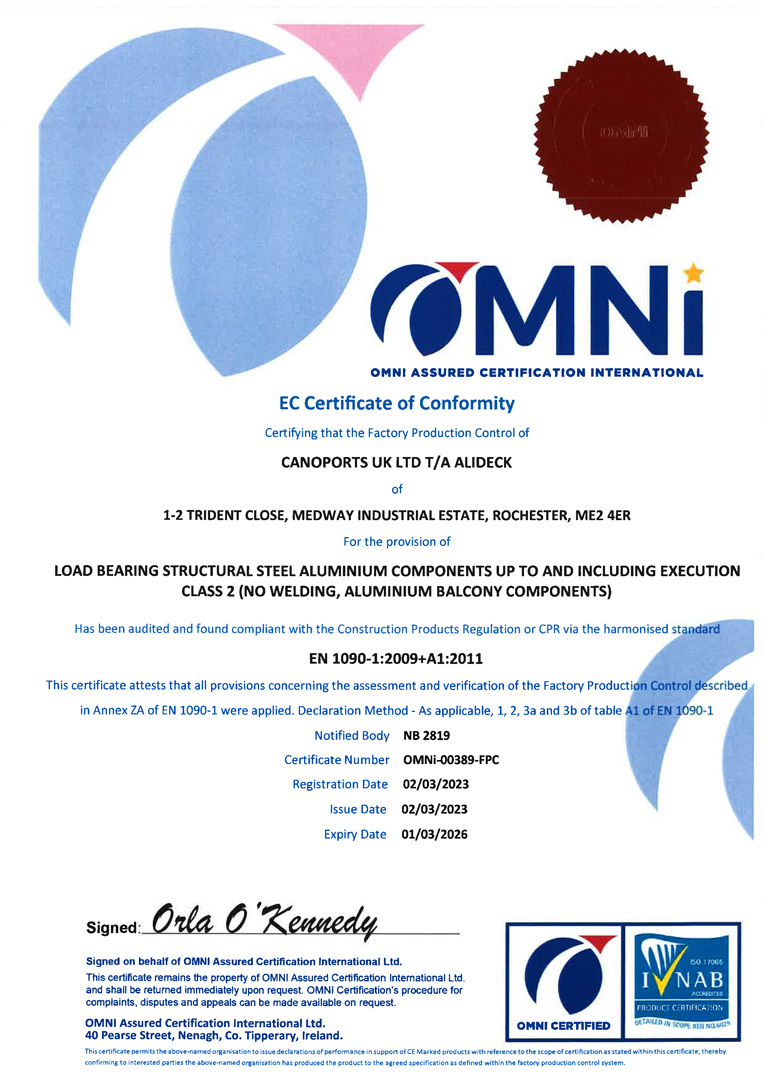AliDeck Aluminium Decking Board Cantilever Properties
Balconies make a wonderful addition to a home, both practically and aesthetically. The level of balcony design capabilities available to architects can be endless. The external walls and features within these elevations will be visible to the public and therefore define the characteristics of each building, so design versatility is an essential requirement in construction materials.
What does “cantilever” mean for decking boards?
A cantilever is a rigid structural element that extends past its support and is only supported at one end.
For decking boards and other structural components, “cantilever” refers to the distance a board can project past its support. For example, when discussing the cantilever of our aluminium decking boards we are referring to the amount that a board is able to project past the joist, beam of steel PFC that is supporting it.
AliDeck Cantilever Values
To achieve a specific design or to solve a particular issue, quite often it might be necessary to run the decking boards past the end of a beam/joist, creating a cantilever. This common requirement requires careful implementation, as too long a cantilever project would introduce unsatisfactorily large amounts of deflection; the longer the cantilever the less able the projecting board is to bear a load.
By applying mechanical/structural engineering calculations to our board profiles, we have created the following charts to show recommended maximum cantilever values results for our 20mm Junior Board and 30mm Senior Board:
Type 20mm
1 = 28.5E3mm 4 E = 70kPa
| Applied Load kN | Full Load | 50% Load Redistribution | 25% Load Redistribution |
|---|---|---|---|
| 1.4 | 155 mm | 218 mm | 178 mm |
| 3.0 | 106 mm | 149 mm | 122 mm |
| 4.0 | 92 mm | 129 mm | 106 mm |
Type 30mm
1 = 80.4E3mm 4 E = 70kPa
| Applied Load kN | Full Load | 50% Load Redistribution | 25% Load Redistribution |
|---|---|---|---|
| 1.4 | 259 mm | 367 mm | 300 mm |
| 3.0 | 177 mm | 251 mm | 205 mm |
| 4.0 | 154 mm | 217 mm | 177 mm |
Where 50% Load Redistribution is considered this assumes that a suitable rigid connection detail is provided to enable 25% of the load to spread to each adjacent board, for example the use of an AliDeck Triple Bolt channel fixed to the undersides of the cantilevered boards to spread applied load across them. The case of 25% redistribution assumes that the load can only spread to one side, such as the end of a set of boards.





